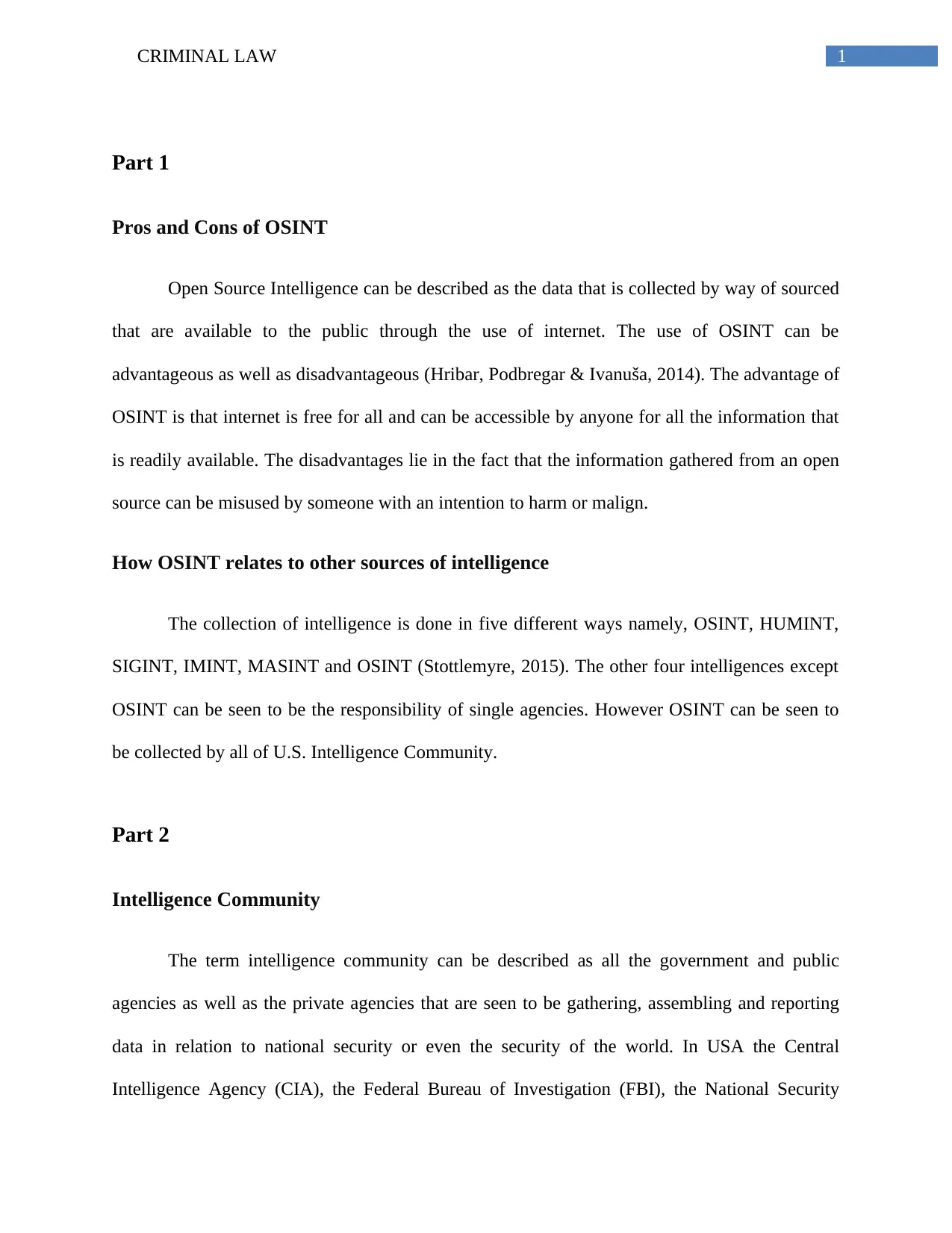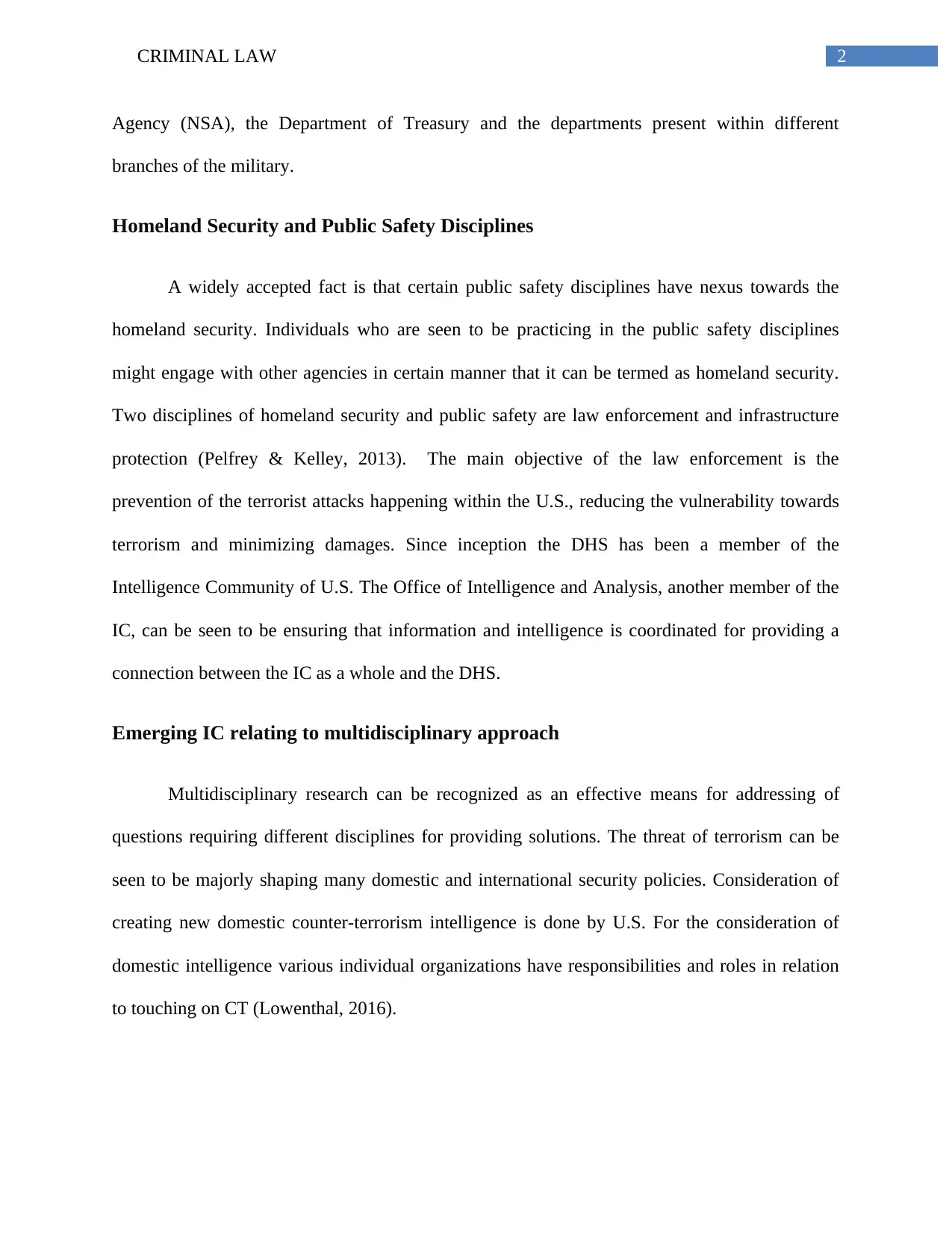Criminal Law Report: Analysis of OSINT and Intelligence Community
VerifiedAdded on 2022/10/19
|5
|751
|26
Report
AI Summary
This report delves into the realm of criminal law, focusing on Open Source Intelligence (OSINT), its advantages and disadvantages, and its relationship with other intelligence sources. It examines the role of the intelligence community, including agencies like the CIA and FBI, in gathering and reporting data related to national security. The report further explores the nexus between public safety disciplines, such as law enforcement and infrastructure protection, and homeland security. It highlights the importance of the Office of Intelligence and Analysis in coordinating information within the intelligence community and the Department of Homeland Security. Additionally, the report discusses the emerging multidisciplinary approach to address the threat of terrorism and the need for expanding intelligence capabilities through higher education and specialized degrees in related fields. This assignment provides a comprehensive overview of the critical components of criminal law and intelligence, offering insights into their interconnectedness and significance.
1 out of 5












![[object Object]](/_next/static/media/star-bottom.7253800d.svg)